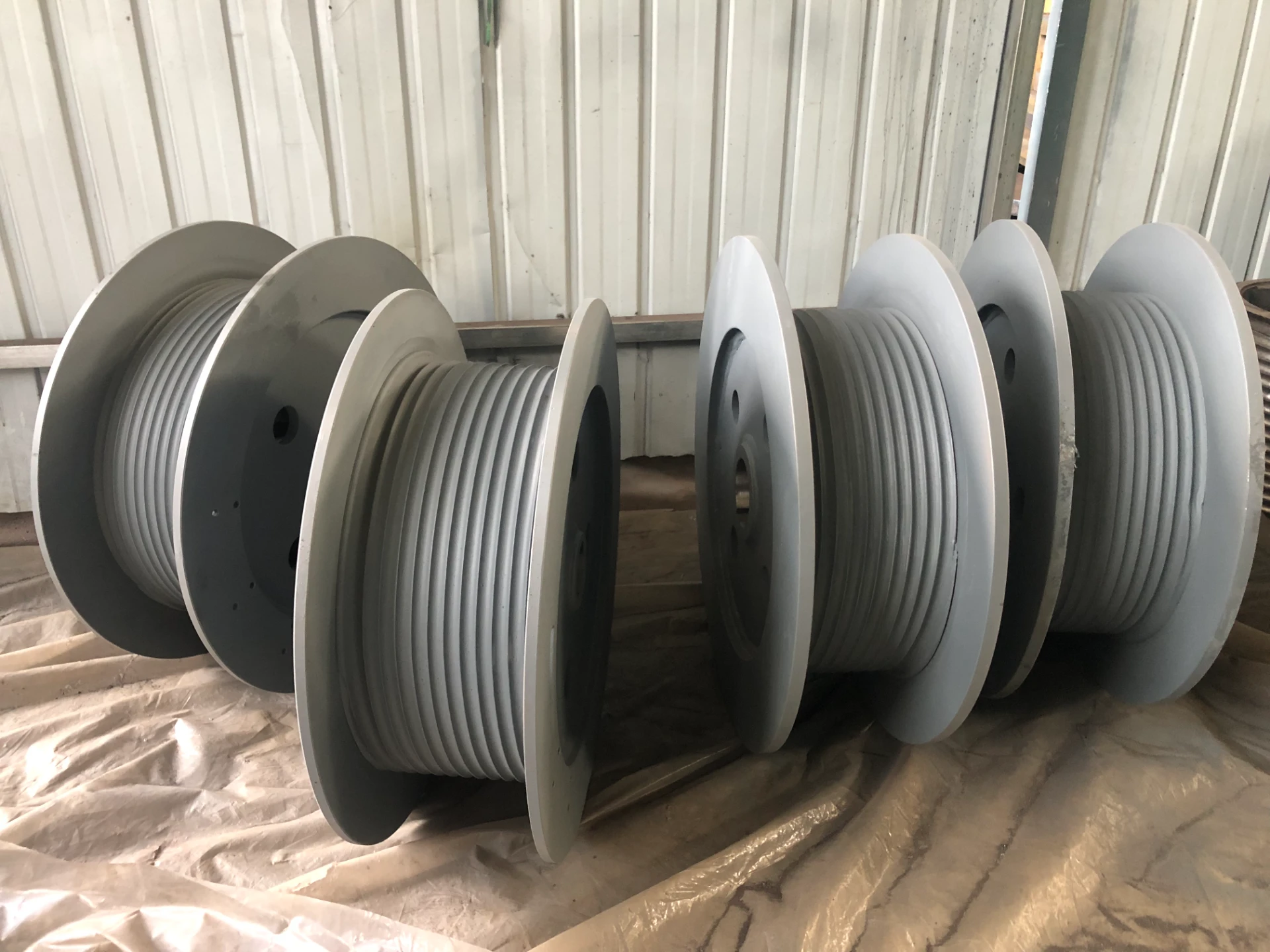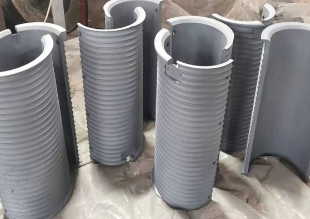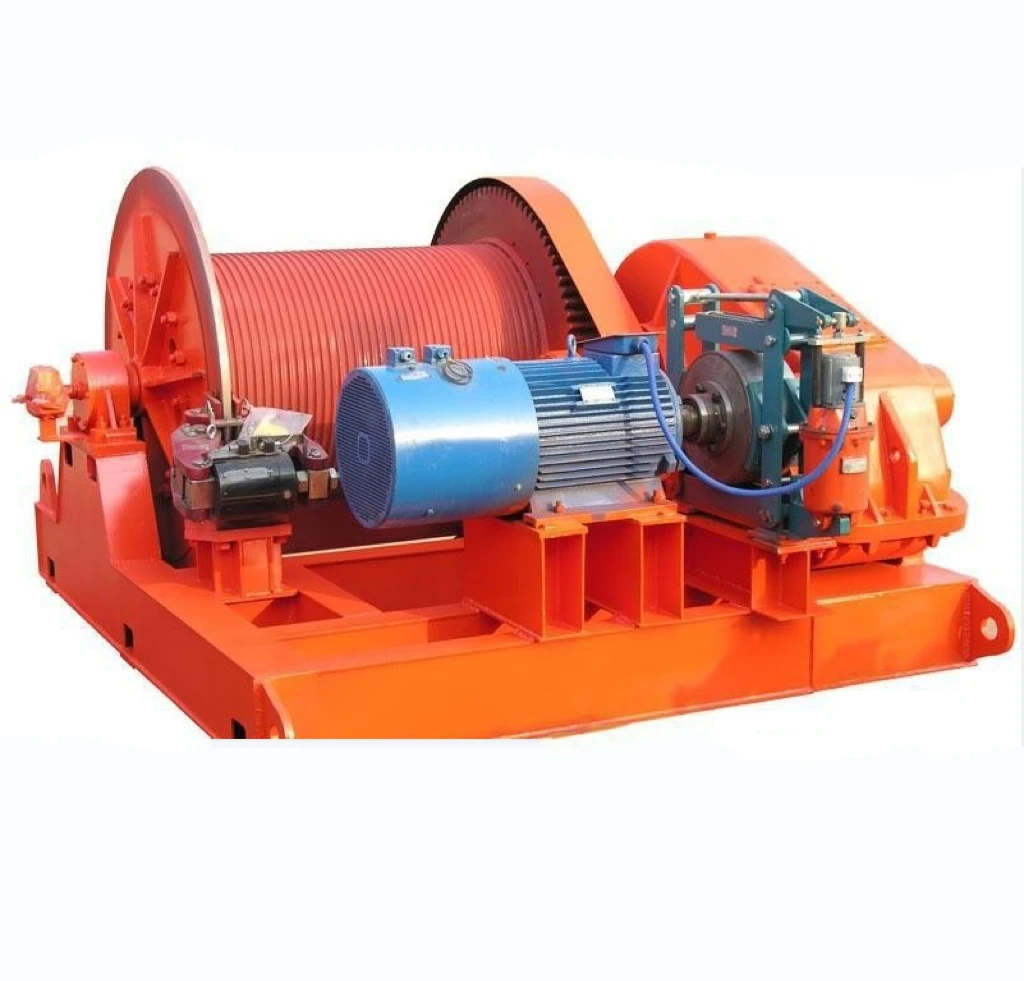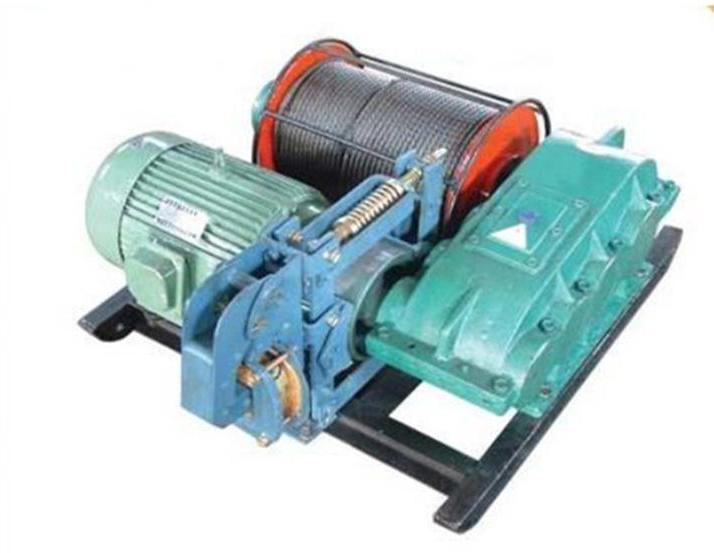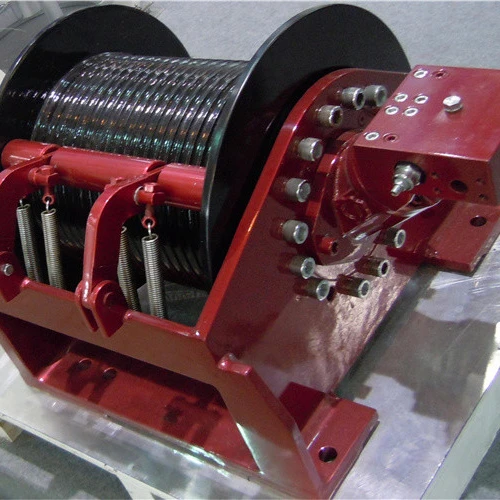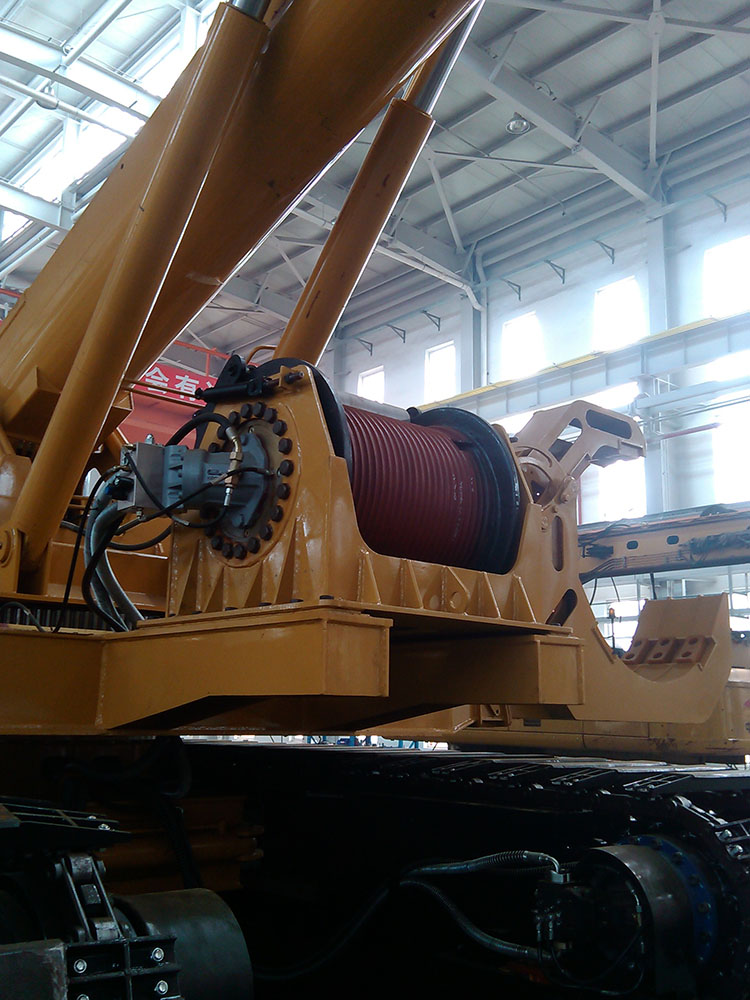Best Hydraulic Winches for Trucks – Reliable Power & Safety Solutions
Hydraulic Winch for Truck: Powering Efficiency in Modern Hauling
Hydraulic winches for trucks might not be the first thing to pop into your head when thinking about logistics, but their role is quietly pivotal across industries worldwide. Understanding these devices and their impact isn’t just about engineering curiosity — it’s tied to global trade, emergency response, and infrastructure development. Whether hauling heavy loads or aiding in post-disaster recovery, these winches are silent workhorses that enable safer, speedier, and more reliable operations.
Why Hydraulic Winches for Trucks Matter Globally
According to the UN’s World Urbanization Prospects (2018), infrastructural projects and transportation networks continue to expand rapidly to accommodate urban growth and industrial demand. Hydraulic winches install on trucks and become essential in this growth, offering the muscle needed for heavy-duty tasks while maintaining operational safety. In rough terrain, across continents or disaster zones, these tools tackle challenges that simply can’t wait.
Consider this: over 60% of industrial material handling failures worldwide can be traced back to inefficient or inappropriate hoisting equipment (ISO 4309 data). Hydraulic winches solve that by combining robust mechanics with fluid power, minimizing breakdowns during critical operations.
What Exactly Is a Hydraulic Winch for Truck?
Simply put, a hydraulic winch for truck is a device powered by hydraulic fluid pressure harnessed from the truck’s engine or pump system to reel in or haul out heavy loads. Unlike electric or manual winches, hydraulic variants offer superior torque and greater durability, especially for demanding applications.
This makes them indispensable in industries ranging from logging, construction, mining, to humanitarian aid. For instance, during disaster relief, trucks equipped with hydraulic winches help clear debris or pull stranded vehicles, speedily restoring access to affected areas.
Core Components of a Hydraulic Winch for Truck
- Hydraulic Motor: The heart of the winch, converting fluid power into mechanical force.
- Drum: Where the lifting cable or rope is wound; must be rugged and reliable.
- Gearbox: Modulates speed and torque with precision.
- Control Valve & Levers: For smooth operation — essential for safety.
- Brake System: Critical to hold loads steady under tension.
- Mounting Frame: Engineered to distribute load stresses evenly across the truck chassis.
Each part is designed not only for performance but also for longevity — frankly, hydraulic winches don’t get famous for flashy tech, but for hard, consistent work day in and day out.
Mini Takeaway:
Hydraulic winches operate on tried-and-true principles, balancing power and safety with engineering simplicity.
Wide-Ranging Applications Around the Globe
From the snow-covered hills of Canada to tropical Asia, hydraulic winches installed on trucks have demonstrated remarkable versatility. Here are some domains where they shine:
- Forestry & Logging: Pulling and securing bulky timber during harvests.
- Construction: Assisting in the lift-and-place of materials where cranes might not reach.
- Mining: Handling cable loads in underground and surface mines.
- Disaster Response: In 2018’s Sulawesi earthquake, aid trucks equipped with hydraulic winches cleared landslides and dusted debris.
- Agriculture & Rural Transport: Moving heavy equipment or animals where road conditions are unforgiving.
Interestingly, organizations such as the Red Cross and various UN agencies rely on such equipment broadly, a testament to the winch’s role beyond profit-driven industry — into humanitarian needs.
Mini Takeaway:
The hydraulic winch for truck is a global workhorse, bridging gaps where infrastructure or raw conditions limit human effort.
Advantages and Long-Term Value of Hydraulic Winches
There’s a practical appeal here, but also emotional weight, especially concerning safety and trust. Consider these benefits:
- High Load Capacity: Hydraulics push heavier loads than electric-scale winches of comparable size.
- Durability & Reliability: Hydraulic systems tolerate harsh environments, dust, and moisture better.
- Cost Efficiency Over Time: Less maintenance downtime translates to lower operational costs.
- Enhanced Safety: Smooth torque control reduces sudden jolts, preventing accidents.
- Environmental Friendliness: When powered by cleaner hydraulic fluids or integrated with eco-friendly truck engines, these systems fit sustainable strategies.
At the end of the day, operators often say they prefer hydraulic winches because they “feel in command” — a nod more to the tactile control and system stability than anything purely mechanical.
Product Specification Table
| Specification | Typical Value | Notes |
|---|---|---|
| Line Pull (Static) | 10,000 - 25,000 lbs | Depends on model and hydraulic system pressure |
| Drum Capacity | 100 - 300 ft cable | Steel cable or synthetic rope |
| Operating Pressure | 2000 - 3500 psi | Variations based on hydraulic pump design |
| Motor Type | Radial piston or gear motor | Radial piston preferred for high torque |
| Weight | 150 - 400 kg | Depends on winch size and frame materials |
Comparing Leading Vendors of Hydraulic Winches for Trucks
| Vendor | Price Range | Customization Options | Warranty | Global Reach |
|---|---|---|---|---|
| LBS Winch Co. | $7,000 - $18,000 | High — drum size, cable, control options | 3 years | Worldwide |
| HydroHaul Ltd. | $5,500 - $15,000 | Medium — mainly pre-configured models | 2 years | North America, Europe |
| TorqueWinds | $8,000 - $20,000 | High — bespoke engineering for extreme uses | 5 years | Asia, Middle East, Africa |
Looking Ahead: Innovations in Hydraulic Winches for Trucks
Emerging tech and green agendas shape the future of hydraulic winches. For starters, many manufacturers are integrating digital controls, enabling remote operation or real-time load monitoring — a plus for safety and data-driven maintenance. There’s a quiet revolution happening with lighter but stronger composite materials too, helping reduce weight without sacrificing durability.
Moreover, advances in biodegradable hydraulic fluids hint at more sustainable operations, crucial when equipment is deployed in environmentally sensitive zones. Ultimately, electrified trucks might one day pair with smart hydraulic systems, marrying power efficiency with zero emissions.
Challenges and How Experts Are Addressing Them
Of course, no tech is without its quirks. Hydraulic winches face issues like fluid leakages, high maintenance costs if neglected, and sometimes integration complexity with truck systems. Experts emphasize regular fluid checks and adopting modular winch designs to ease repairs.
Some pioneering workshops are experimenting with IoT-enabled sensors on winches, proactively detecting faults before they become disasters — it feels like a game-changer, especially in remote sites where downtime costs a fortune.
FAQ: Your Questions About Hydraulic Winch for Truck
- Q: How do I determine the right pulling capacity for my hydraulic winch?
- A: Start by assessing the maximum load you expect to pull, considering any safety margins (usually 25-30%). It's best to consult the winch specification and your truck’s hydraulic pressure capability to ensure compatibility.
- Q: Can I install a hydraulic winch on any truck?
- A: Mostly yes, but your truck needs an adequate hydraulic system that matches the winch’s pressure and flow requirements. Some older trucks may require pumps upgrades or additional fittings.
- Q: What maintenance is needed to keep a hydraulic winch reliable?
- Regular checks of hydraulic fluid levels, inspecting hoses for leaks, cleaning the drum and cable, and testing the brake system are key. A yearly deep service by certified professionals extends life significantly.
- Q: Are hydraulic winches safer than electric winches?
- In general, yes. Their smoother torque and superior braking reduce jerkiness during loads, minimizing risk. But correct use, operator training, and gear quality are crucial no matter the type.
- Q: How do hydraulic winches perform in extreme weather?
- They’re built for rugged conditions, tolerating cold, heat, and moisture better than many electric systems. That said, cold weather can affect fluid viscosity, so winter-grade hydraulic oils are recommended.
Wrapping Up: The Worth of Hydraulic Winches for Trucks
When you think about it, a hydraulic winch for truck is sort of the unsung hero — not glamorous but incredibly vital. From moving vast loads to saving lives after disasters, its robustness combined with evolving tech makes it indispensable in our interconnected world.
If you want to dive deeper or explore tailored solutions, I recommend checking out hydraulic winch for truck experts who specialize in practical, field-tested gear for a variety of industries and terrains.
Handy, powerful, and evolving — these winches will continue to pull their weight (and more) well into the future.
References
-
Double Drum Hydraulic Winch – Durable, Efficient Load Handling SolutionsNewsNov.25,2025
-
Hydraulic Drum Winches: Powering Heavy Lifting with Precision and DurabilityNewsNov.24,2025
-
Hydraulic Driven Winch – Reliable Heavy Lifting Solutions for Industry & ReliefNewsNov.24,2025
-
Hydraulic Crane Winch – Powerful & Precise Heavy Lifting Solutions | LBS WinchNewsNov.23,2025
-
Electric Over Hydraulic Winch: Efficient, Durable Lifting Solutions for Modern IndustryNewsNov.23,2025
-
Hydraulic Logging Winch Guide | Global Applications & InnovationsNewsNov.22,2025


